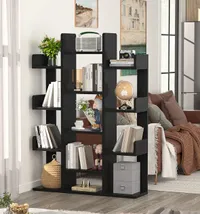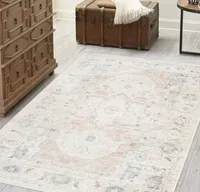Should I 'float' my living room furniture? The how and why of moving your sofa away from the walls
Floating your furniture can help make a living room feel perfectly proportioned. Here, the experts weigh in on how best tackle this layout idea


The idea of floating furniture involves pulling furniture into the center of the room and away from the walls. In the right hands, it's a clever tool to create the feeling of more space and a useful zoning device. In the wrong ones, it can actually make a room feel more cramped and poorly designed. To get to the core of how to master the idea, we spoke to the interior designers who explain in what situation it might be best to use the floating furniture hack, and when it should be avoided.
‘The concept of having floating elements in a room is an interesting and often useful one. I’m a great believer in the combination of form and function and when we choose to float something in our work, there’s usually a reason behind it which then speaks of authenticity,’ says interior designer Jo Littlefair.
So what exactly is it? Instead of the tendency to push all pieces of living room furniture to sit flush against the walls, the floating furniture trick requires you to think tactically about pulling your furniture in to create zones and a cozy feel, embracing all sides of a sofa, for example, instead of hiding certain angles by propping it up against the wall. Here we talk to the designers and get their advice for embracing this living room furniture idea.

Oonagh is a content editor for Livingetc.com, bringing her experience in writing on luxury properties and an enviable little black book of designers to offer professional advice. Here, she's gathered their best tips for making a floating furniture layout work.
What are the benefits of 'floating' furniture?
Zoning an open plan room

First up, the pros. A floating piece of furniture can really work to zone a space. If you are thinking of redesigning a modern living room, an open plan space, for example, it might be tricky to create different zones when you have so much space to play with. You may want to divide up the space so you separate your office from your living room, your kitchen from your dining area, for example, but putting furniture flush up against the wall doesn't help matters.
'Floating the furniture is often counter-intuitive. Though clients often think it will divide their rooms further, it actually gives the impression of larger spaces by letting the walls recede from the inhabited space, and allowing different "islands" of functionality to co-exist without any visible divisions,' says Asma Florençon of Atelier Varenne.
Try your hand at floating furniture by creating a designated living room corner in an open plan space, with the sofa backs facing outwards. This makes for a cozy squared-off space in the room. You might want to put a rug and coffee table down in the center, or have a TV opposite the two sofas to emphasize the purpose of the space.
Floating is mostly done with sofas, but also works for couch alternatives, of course, like daybeds and chaises. Or a floating bookshelf can really work in a floating manner, and floor-to-ceiling can create the look of a temporary wall. One side might be your dining area, and the other could be a hidden away office corner that you can forget about when entertaining guests. Decorate with plants, books and vases to make it feel more permanent. This scheme is from Natalia Miyar, who has used this device to help distinguish the space.
The Livingetc newsletters are your inside source for what’s shaping interiors now - and what’s next. Discover trend forecasts, smart style ideas, and curated shopping inspiration that brings design to life. Subscribe today and stay ahead of the curve.
'Ottomans or modular seating that have a low profile and can also be moved around,' says Beatriz Rose of Byrdesign. 'Also custom seating with a high wingback chair around a floating fireplace, perhaps, or a desk if it has a finished back.'
Tree-Shaped bookcase from Amazon
A decorative bookcase that can be used to zone the space in a living room, either floated in the middle of the room or coming out from the wall.
Creating wall space
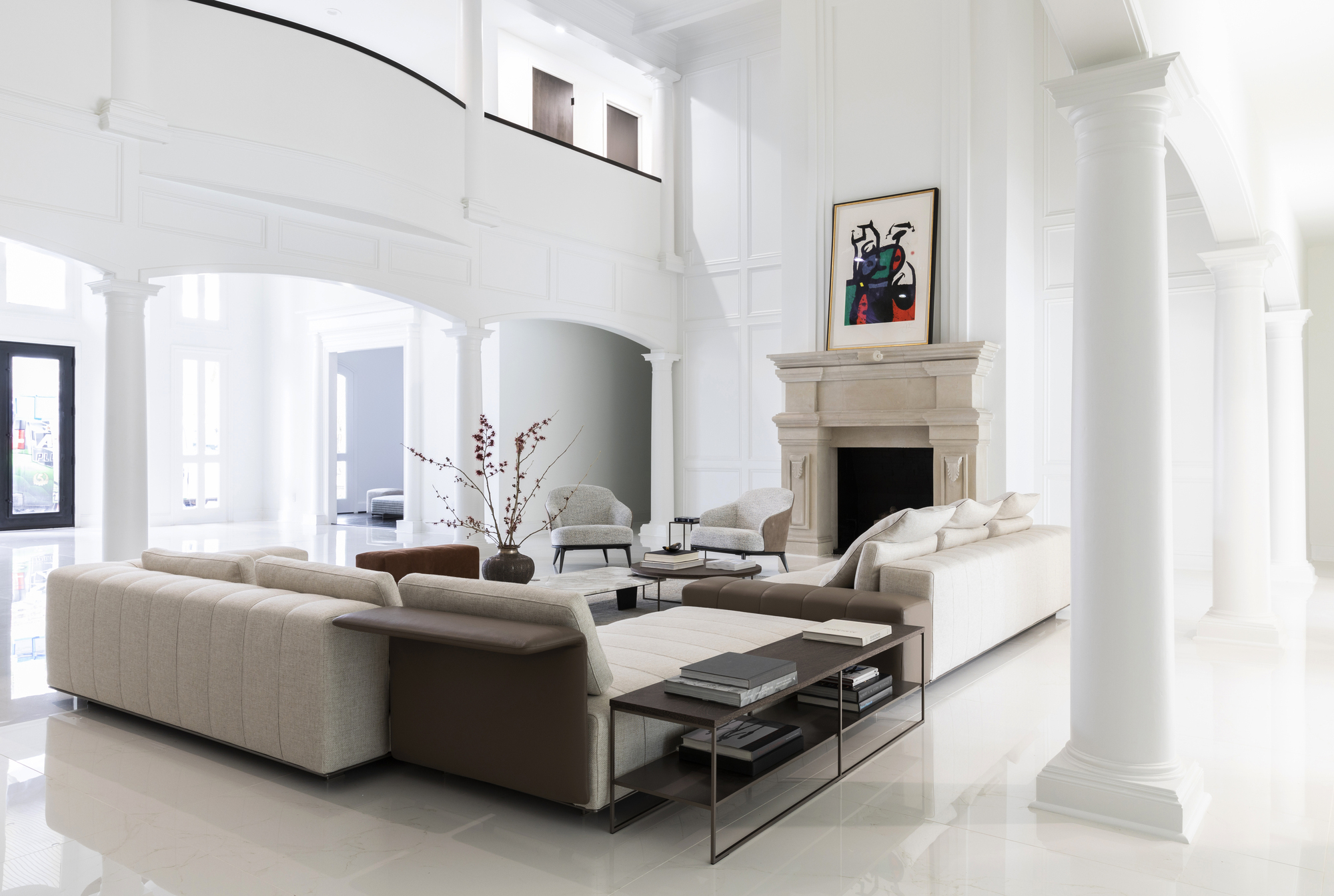
Another pro of floating your furniture is that you then have a lot more wall space to hand. This can really help to make the room look bigger, a ceiling look higher and the room in general look grander as you can take in the length of the wall in its entirety. Living rooms that have furniture blocking wall space can make the ceiling look lower. Moving furniture away from the wall also gives you a bigger canvas to play with living room wall decor or shelving and storage.
'Floating furniture is a great way to save space and create storage. Walls are great for storage, so if you place furniture up against them, you take away that space to use as a bookshelf or placement for amazing artwork,' says designer Linda Hayslett.
Delivering a cozy feel
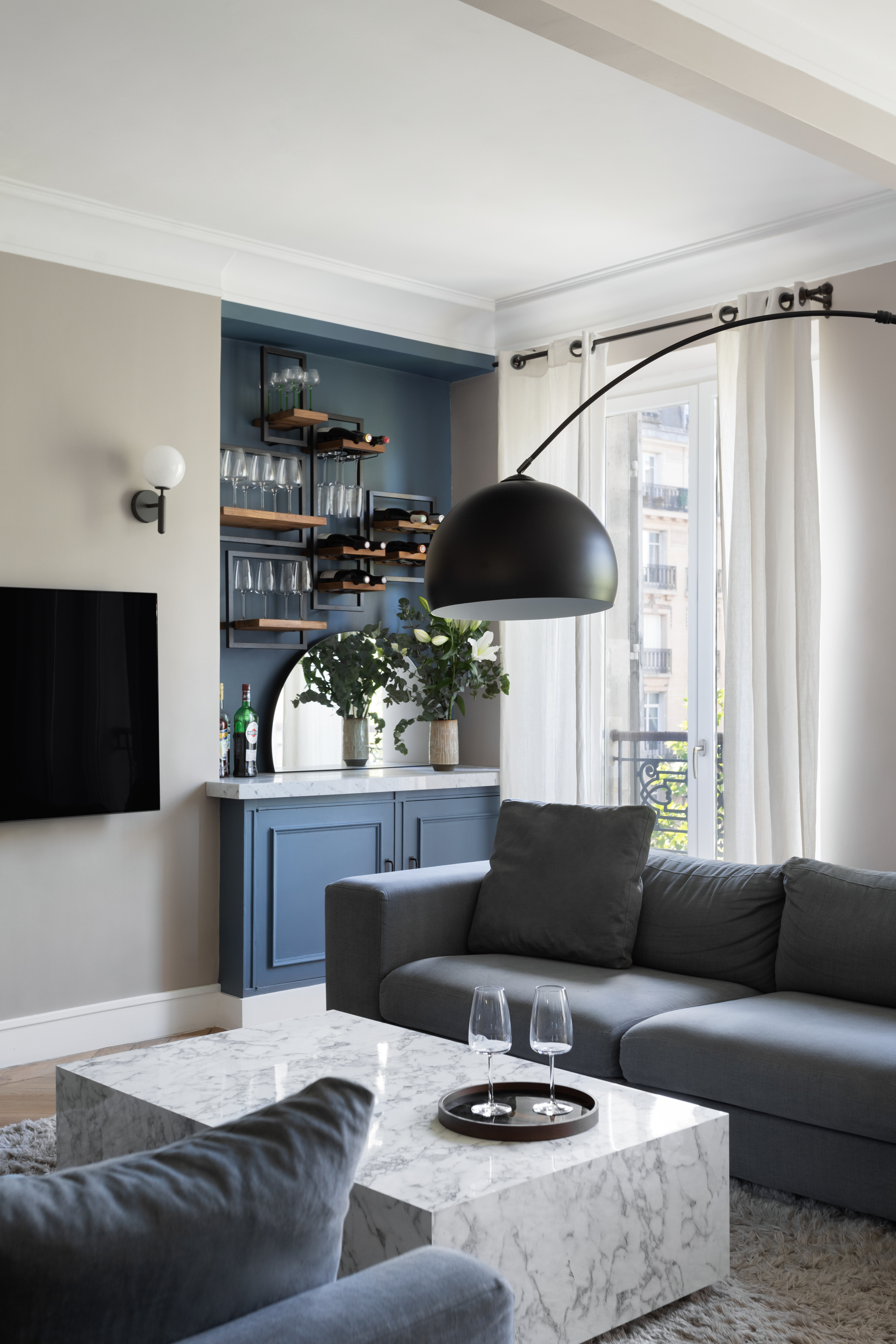
What's more, the floating furniture technique can encourage a cozy living room. By creating these corners using furniture, you're creating intimate, comfortable zones that are conversational spaces. It means you can also create a living area that's perfectly proportioned for socializing and relaxing, without relying on the proportions of the room to inform you. Small rooms and spaces do lend themselves to this cozy feel, and if you don't float your furniture, you run the risk of an open-plan room that feels cavernous and too big.
'Here, we made the sitting area into an intimate cocoon, pulled together with a gorgeous shaggy carpet, which contrasts with the fairly austere marble coffee table,' explains interior designer Asma Florençon. 'This allows the bar alcove to claim its own space, the full-height windows to have breathing room to communicate with the exterior, and a large dining table to exist alongside (yet out of sight) which doubles as a messy desk during the day.'
Softening harsh edges
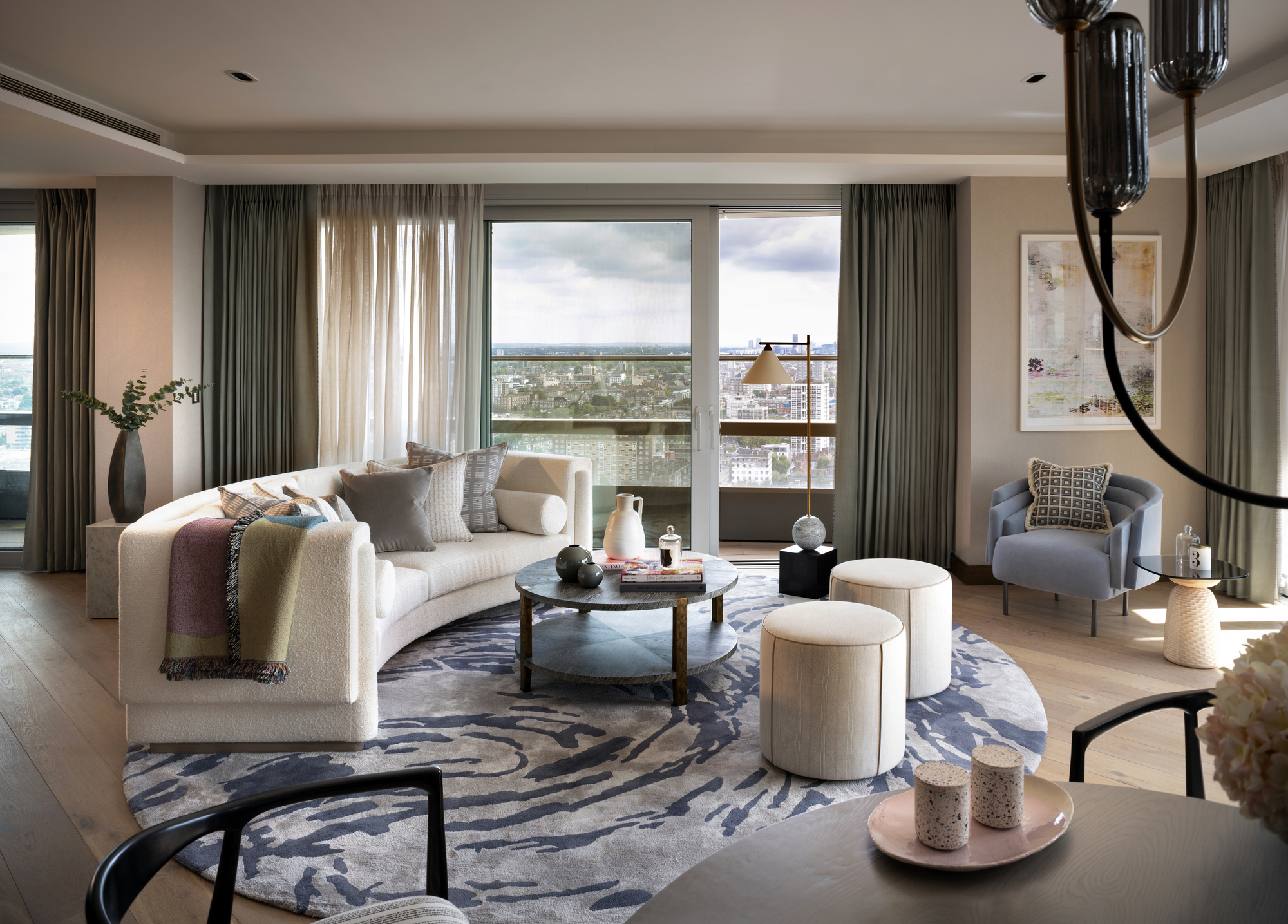
A floating living room sofa can also help hide areas of your room you might not want to be on display. 'In a recent resort scheme we had a guest room which had a step down from the bedroom to a living area,' says Jo Littlefair of Goddard Littlefair. 'To soften the aesthetic and keep a low-key feeling to the space, we built a curved sofa that oversailed this step, softening any harsh lines. The seat then curved out and we gave it the impression of this section floating by recessing the supporting plinth.'
'The seat seemed to languorously float over the space and had the added benefit of toes never stubbing sofa legs,' Jo adds. 'In a bare-foot environment that is a critical factor that we take into all our projects.'
Showing off statement pieces

Finally, floating furniture makes a statement of your piece of furniture. Instead of hiding it away, covering up one side of it by propping it up against the wall, it means the furniture can really show off in the center of the room, and guests can admire all its angles.
A curved sofa is an example of a piece that you might not want to float against the wall and makes for an elegant living room. ‘A curved sofa can help to define an area and will work in open-plan spaces as the back of the sofa is a design feature in itself,’ says Natalia. A curved sofa gives an impression of airiness and should sit away from the wall so that it can be admired from the front and back. Use accent chairs dotted around your curved sofa to highlight the crescent shape, and repeat the curves with an oval-shaped coffee table to complement it.
This beautiful rusty orange sofa in a room designed by interior designers, Le Whit, is beautiful from all angles and is shown off in its entirety in this space in Chelsea, New York.
Why floating furniture is sometimes a bad idea

However, floating furniture might not work in all living rooms. If you have a dark or small living room, this technique might only make the space feel more cramped. So reserve the floating method for spaces that are larger and open plan.
Another reason a floating layout might not work is if the room is an interesting shape. This design from Brendan Wong Design has the sofa sat against the wall to emphasize the aesthetically pleasing curve of the wall.
If you have decided floating furniture is not for you, you should still avoid a sofa touching a wall, 'even if you feel like you can’t fit it in,' says interior designer Emily Rickard. 'A little breathing space around key pieces makes the room feel bigger,' she says, 'plus it will create an intimate and cozy vibe.'
How does a rug help float furniture?

Rugs are your best friend when floating furniture in the living room, as they provide a zone that you might wish to design around. Consider a living room rug, or perhaps a rug under your dining table to help emphasize the space. When sizing and choosing a rug for a living room area, the rug can have at least part of every main furniture piece touching it. Either all furniture legs rest on the rug, or just the front legs – the exception being a centerpiece coffee table, for example. This unifies a large space, bringing all elements of a living room together.
If you want a large area rug that will fill your floor space, choose a rug that leaves around a 18 inch gap between the edges of the rug and walls of the room.
This scheme by Byrdesign relies heavily on the rug for zoning. 'The rug should be oversize and the sofa should sit effortlessly and comfortably within the rug,' says Beatriz Rose of Byrdesign.
Madeline vintage area rug, Rugs.com
Recreate the faded look at home with this vintage style, white-washed area rug.

Former content editor at Livingetc.com, Oonagh is an expert at spotting the interior trends that are making waves in the design world. She has written a mix of everything from home tours to news, long-form features to design idea pieces, as well as having frequently been featured in the monthly print magazine. She is the go-to for design advice in the home. Previously, she worked on a London property title, producing long-read interiors features, style pages and conducting interviews with a range of famous faces from the UK interiors scene, from Kit Kemp to Robert Kime. In doing so, she has developed a keen interest in London's historical architecture and the city's distinct tastemakers paving the way in the world of interiors.
